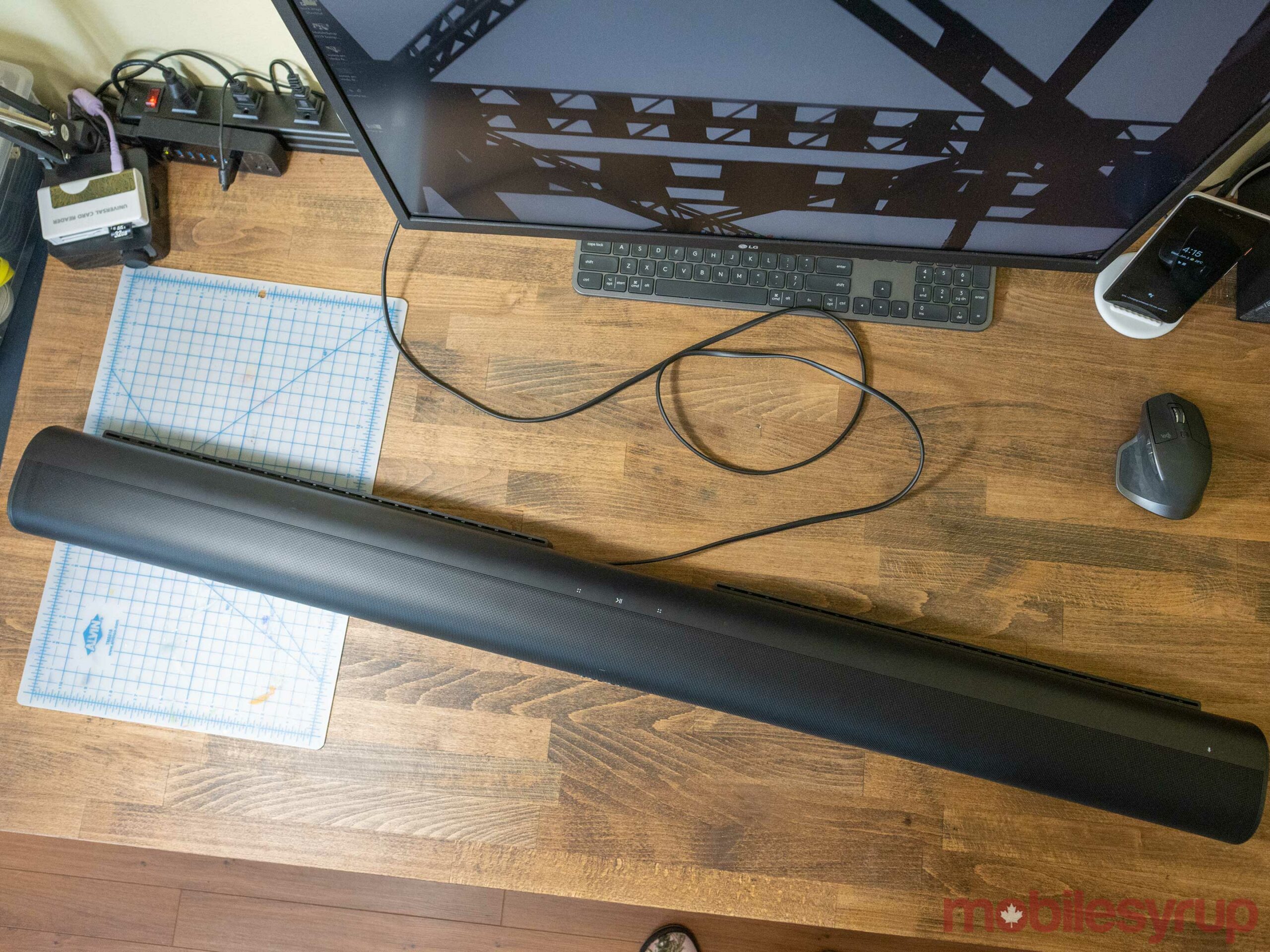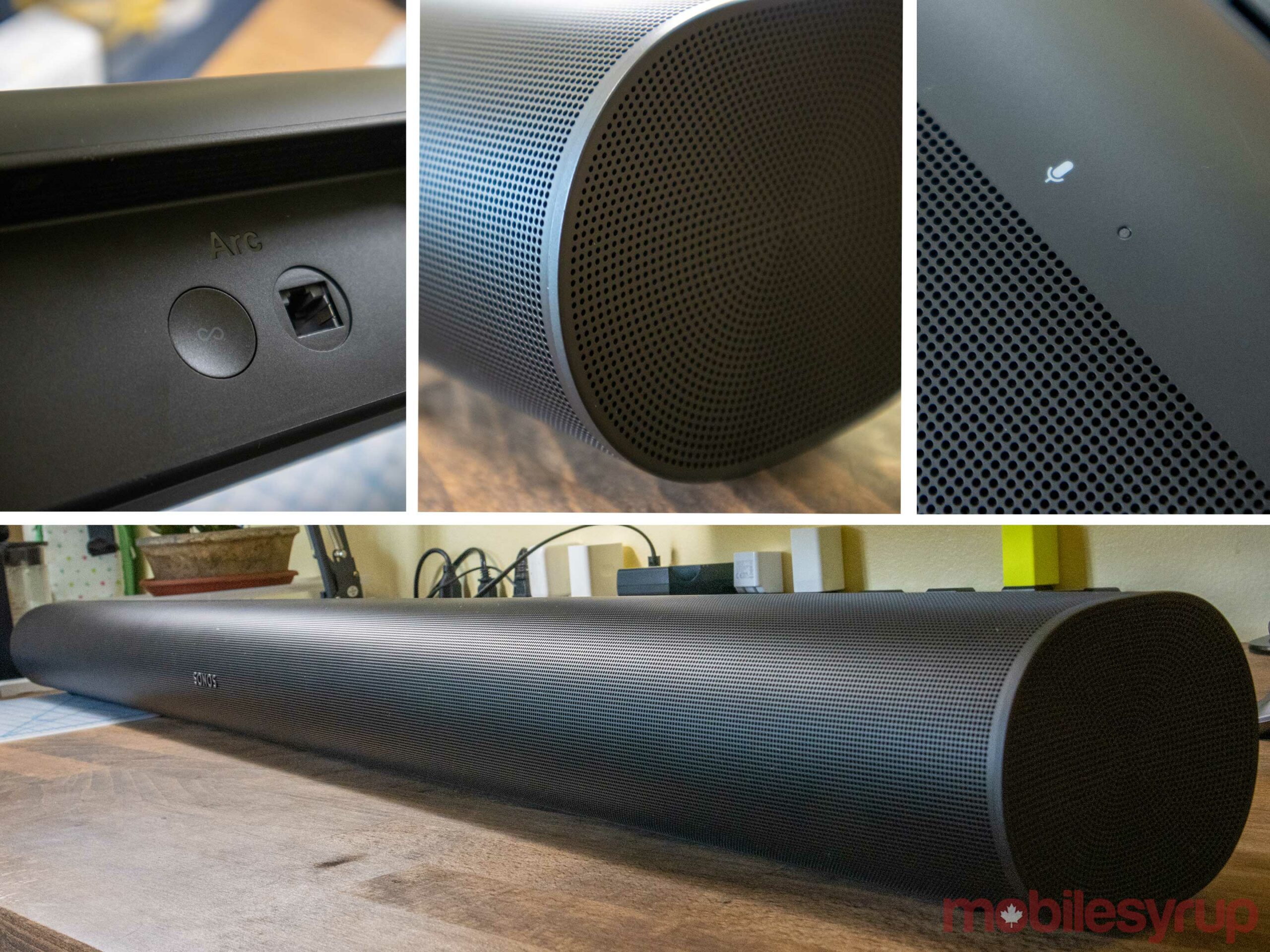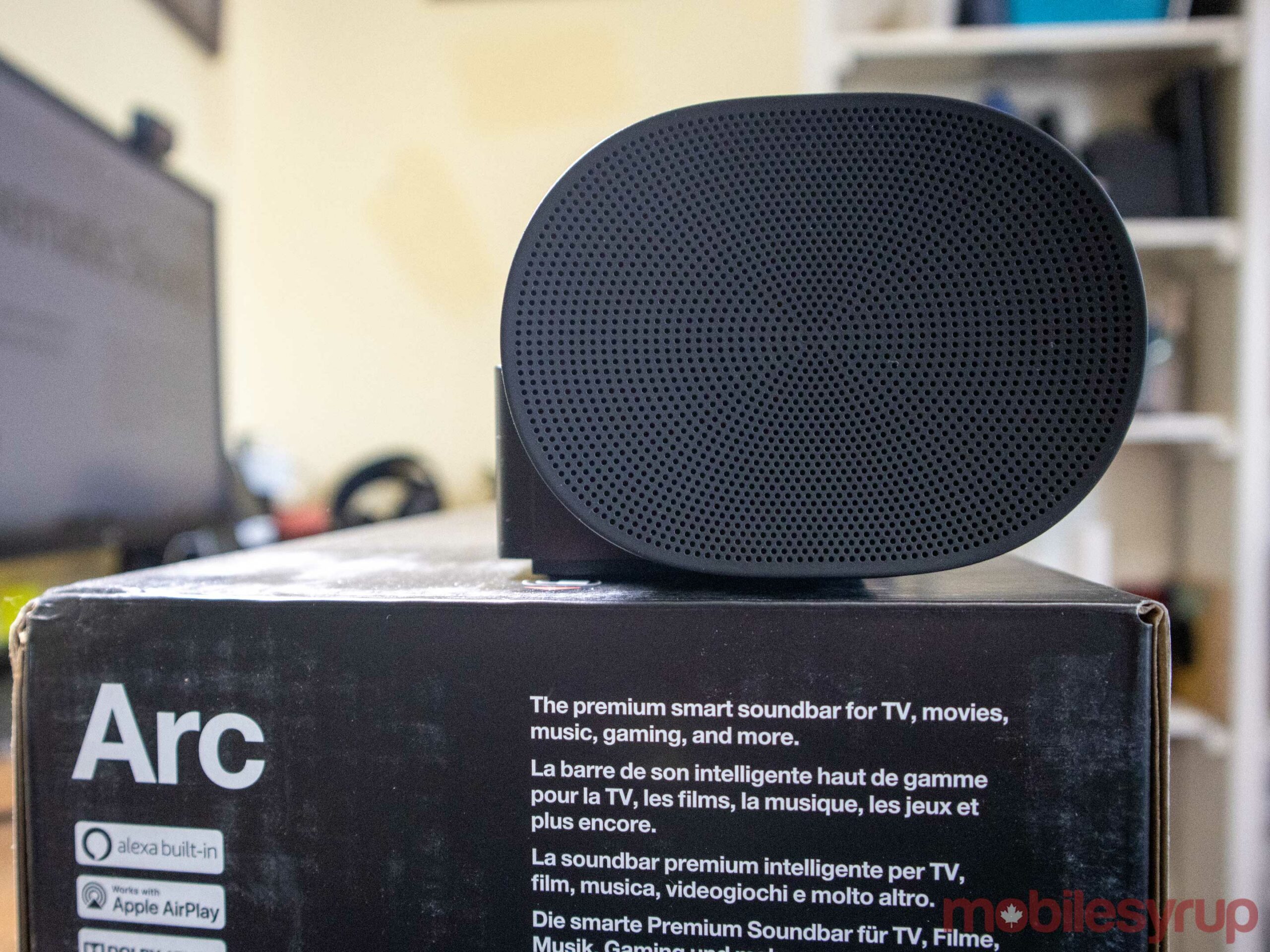
The Pros
- Really wide and immersive soundscape
- Atmos support was needed and delivered
- Clean and modern design
The Cons
- No built-in smart TV stuff
- Needs to run on S2 app
- At this price a remote would be nice
The ambitious high-end sound company has been on a roll this year, and its latest speaker, the Arc soundbar, is an astounding piece of hardware that’s elevated my home theatre to near perfection.
The Arc is a pricey proposition, but luckily it’s worth $1,000 CAD given it features outstanding sound quality, Dolby Atmos support and, of course, access to Sonos’ ecosystem.
There are some specifics that may hold some people back from getting the Arc, but for the most part, this speaker is an impressive device that improves on Sonos’ previously released home theatre speakers.
Read on to find out if the Arc is right for you, and if you’ll need to alter your existing Sonos ecosystem or buy a new TV to get the most out of it.
I want to pick it up and play it like a guitar
My favourite part about the Arc is its clean-looking perforated cylinder design. Sonos heats a piece of plastic with 76,000 holes in it and wraps it around the speakers to give it a seamless look that will likely blend into most TV stands nicely.
However, you’re probably going to want a somewhat large platform to place the Arc on given it’s 45-inches wide and takes up quite a bit of space under your TV.
You also need to make sure you place the soundbar on top of a cabinet and not inside a cubby or TV stand nook since it has upward and left and right firing speakers. This means it needs unobstructed space to provide optimal sound.
On the back, you’re only going to find the Sonos Connect button, an HDMI e-ARC port, an ethernet port and the power plug. It does come with an HDMI to Optical audio adapter in the box, but you lose Atmos support by using an optical connection.
You also get compressed Atmos support with a regular HDMI ARC cable and port on your TV. You get no Atmos when you use a regular HDMI port and cable. Take this into consideration if you want to buy this soundbar. Even at its lowest setting, the Arc still sounds great and gives you defined left-centre-right audio channels, but not the excellent sound bouncing Atmos technology.
This is because Atmos uses a lot of bandwidth to transmit both sound data and the data to place sound in a 3D space. As a result, it needs a fast port and cable to pump that much information as you watch something.
It’s no slouch inside either, Sonos has packed eleven class-D digital amplifiers, eight elliptical woofers and three angled silk-dome tweeters into this cylinder. These are arranged at various angles, and some are set deeper into the plastic to allow Sonos to utilize the angle of the hole the speaker sits in to help direct sound.
Overall, the Arc’s level of craftsmanship is up to par with what I’ve come to expect from Sonos, but I’ve saved the best for last. Because it’s plastic, the speaker is one million times easier to dust than a fabric speaker. Other fabric soundbars and speaker owners know what I’m talking about, so if this bugs you, the Arc is a fantastic alternative.
Does it make watching content better?
When it comes to watching your favourite shows and movies, the Arc definitely elevates the experience. I’ve used various soundbars and TV speakers over the past few years, and the Arc blows them all away in nearly every category.
I need to mention that I live in an apartment so late at night I generally watch TV with the volume pretty low. In this case, the Arc held up amazingly compared to the Sonos Beam and the Polk Command Bar. I found that with the Beam I’d sometimes lose a bit of dialogue when something loud happened on the screen, but that’s not the case with the Arc, which represents sound extraordinarily well across varying volumes.
While I’ve focused a bit on low volumes, don’t worry, the Arc has plenty of firepower when it’s cranked, and it has a much more cinematic audio quality than a lot of other soundbars I’ve tested. This has to do both with its width and its dedicated upward-firing Atmos speakers.
These four speakers alone provide a very broad soundstage in a straightforward package and if you can take advantage of Atmos, it’s pretty incredible.
The most interesting part of the Arc is that it isn’t even the real top of Sonos’ home theatre lineup. You can also pair it with two other Sonos speakers as rear surround channels and a Sonos Sub for more bass response.
I don’t have a Sub, but when you do connect one, the Arc offloads some of its bass responsibilities to the sub so it can focus more on high-frequency sounds, which should result in a cleaner sound output overall.
The ifs, ands, and buts
There are a lot of tiny little nuances you need to know to get the most out of the Arc, and I’ll try to explain them here. The main pain point I see people talking about online is whether or not it’s worth it to use the speaker without an E-ARC capable TV.
However, for most of my testing, I used a single Arc soundbar with no surrounds. On the TV side, I mainly used a TCL series-6 from 2019 with only an HDMI ARC port, not E-ARC, and I would happily buy the soundbar based on that quality alone.
The Arc comes with an Atmos-supported high-speed HDMI cable, so as long as you don’t need to set the TV far away from your soundbar, the basic cable should be fine. If you need to buy a replacement or a longer one, make sure you get an HDMI 2.0 cable to support the high-level audio format.
The next thing to know is ARC vs E-ARC. Both are types of HDMI ports that have an audio return channel. On a basic level, E-ARC is the modern and more capable sibling to ARC because it can pass more information, but in practice, both seem to function similarly for now.
When you plug something into one of these ports, it can automatically wake up your TV, control the volume with a single remote and more. In terms of the Sonos Arc soundbar, you’ll get the best quality with E-ARC, but a regular ARC connection is fine too. The main difference between the two with the Arc soundbar is that E-ARC can support uncompressed Atmos and ARC can only play compressed Atmos.
The speaker is also running on the Sonos S2 app, which has new Audio codecs and support for higher fidelity content. That’s why the Arc can stream Atmos content. This also means that you’ll be able to stream higher quality music to Sonos speakers too, but that they need to be connected to the S2 app as well, and that gets a little tricky.
If you only have newer Sonos products from the last few years, you’re good to go and can download the new app and forget about the old one.
If you have some older Sonos products like the original Play 5 or the Zone Players, you might need to split your system into two parts that use the old and new apps separately. This is because of the Atmos support the Arc needs to be on the new S2 app, and the older hardware isn’t powerful enough to run the new S2 software.
However, you can have a two app system, it will just be a little less seamless than having everything in one app. You can learn more about the app breakdown and how Sonos is handling the migration in our prior reporting.
A TV upgrade worth getting
In the end, you can't go wrong with the Arc. Even at its most basic non-Dolby Atmos settings, it still sounds fantastic and will likely be a significant upgrade over most other soundbars.
The fact that it can support Atmos for the few streaming services like Netflix, Prime Video and Disney+ that support the audio format is also nice, but honestly, there isn’t a ton of content out there. Most people will be able to find a few things they want to see with it and lots of new movies will have it, but for now, it’s definitely not a widespread feature.
The added fact that it's a Sonos product and allows you to stream music, playlists or AirPlay content to the bar is fantastic, and pairing with other Sonos speakers for multi-room audio is always amazing.
The Arc also features four microphones that make it easy to set it up as either an Alexa or Google smart speaker if you want a voice assistant near your TV.
The Sonos Arc is available on June 10th for $999 in Canada and it comes in ‘White’ and ‘Black.’ You can pre-order the soundbar on the company's website now
"Even at its most basic non-Dolby Atmos settings, it still sounds fantastic and will likely be a significant upgrade over most other soundbars"
MobileSyrup may earn a commission from purchases made via our links, which helps fund the journalism we provide free on our website. These links do not influence our editorial content. Support us here.






